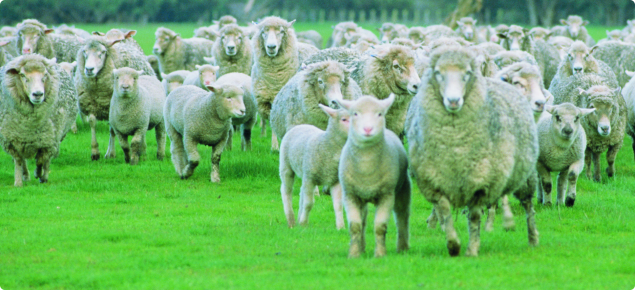Introduction
Sheep nematodes are recognised as a major cause of reduced lamb growth rates and carcase values. In Western Australia (WA), significant worm burdens have been identified in prime lambs from many properties, indicating that control measures are often inadequate. Inappropriate anthelmintic treatment programs will also affect the long term sustainability of prime lamb meat production through increased levels of anthelmintic resistance and the potential for excessive anthelmintic residues.
There is an obvious need to demonstrate and validate best practice prime lamb worm control in meat sheep flocks. In addition, long-term adoption of improved practices by producers requires the continued support of an experienced network of private advisers who are familiar with the principles of sustainable, effective prime lamb worm control.
Project aims
The aims of the project are as follows:
- to quantify the cost of worms on prime lamb production as the basis for extension messages regarding the need for effective control
- to develop integrated parasite management (IPM) packages that deliver the most efficient control recommendations, based on observations of the effects of different factors encountered on different properties
- to provide private consultants with the ability and confidence to provide worm control advice, hence expanding the state’s independent advisory capability
- to demonstrate the benefits of IPM-based worm control to the WA sheep industry, as the basis for the adoption of more efficient programs.
Materials and methods
Fourteen commercial sheep properties have been recruited into the project, with links to eight private consultants or veterinarians. The groups are located throughout the different agricultural regions of WA and include a range of environments and drench-use regimes. All breeds are Merino-based; generally a Merino ewe and British breed sire.
The worm control practices used in participating mobs of ewe and prime lambs used previously were documented, and current-year measurements have involved observing the outcomes without intervention.
In future years, the producers of approximately half of the flocks will be encouraged to implement recommended IPM measures, so that changes in effectiveness can be compared to that occurring in the previous years, and on non-IPM properties.
On each farm, within a flock of prime lambs, worm-control groups of 50 lambs were formed — one was given anthelmintic treatments to continually suppress worms, and the other subjected only to the normal farm program. Lamb weights and worm egg counts will be recorded at marking and 4-5 times subsequently, until at least one draft of lambs has been sent for slaughter. Pasture quantities will be assessed, and where feasible, carcass data will be recorded after slaughter where feasible.
The key parameters for comparison in relation to estimates of worm infections are lamb growth rates and total weight gain, dressing percentages and economic returns. Growth performance will also be analysed as an interaction between nutritional situation and worm egg counts. Ewe worm burdens and anthelmintic resistance levels will also be monitored.
Over the three year project term, the observations will lead to the definition of best practice IPM recommendations for different environments, production systems and nutritional situations.
Once the on-farm systems are established, the consultants will be more closely engaged with project data and provided with intensive worm-control update training. The monitor properties will provide local demonstrations for other producers, including for communication regarding Lambplan information, feed budgeting and grazing management tools.
The information delivery network of advisers and collaborating producers will also provide valuable communication channels for non-worm control-related sheepmeat production topics.
Progress
The project commenced in July 2013 and the analysis of the findings is in progress.
Preliminary results indicate wide variation between lamb flocks in the effects of worms, and this is not clearly related to the size of the worm burden. It is likely that rapidly-growing lambs are able to tolerate larger worm burdens than lambs with low growth rates, mostly as a reflection of the pasture nutrition available.
The investigations also suggest a major effect of worm control in the ewes prior to lambing, which would affect the degree of worm challenge to their lambs, and therefore the likelihood of an adverse effect on their growth over the following weeks.
Drench resistance tests on participating farms indicate there is wide variation in the effectiveness of drenches, and in some cases this would explain relatively poor effects of treatment.
Funding
Funding is provided by Meat and Livestock Australia (MLA) and the Department of Agriculture and Food, Western Australia (DAFWA). This project is similar in format to an MLA-supported series of observations, 'Lifting The Limits', involving four institutions in New South Wales and Victoria.

